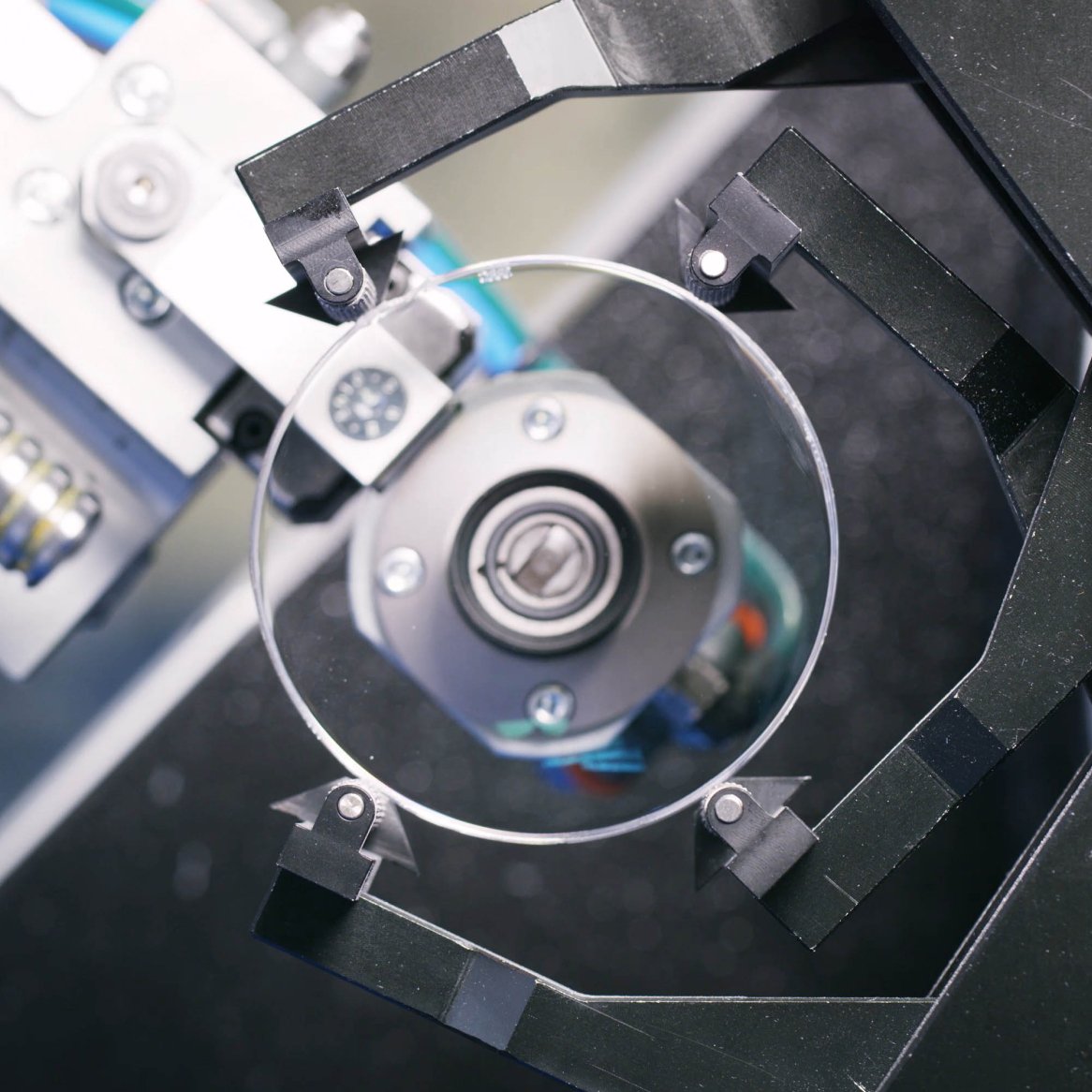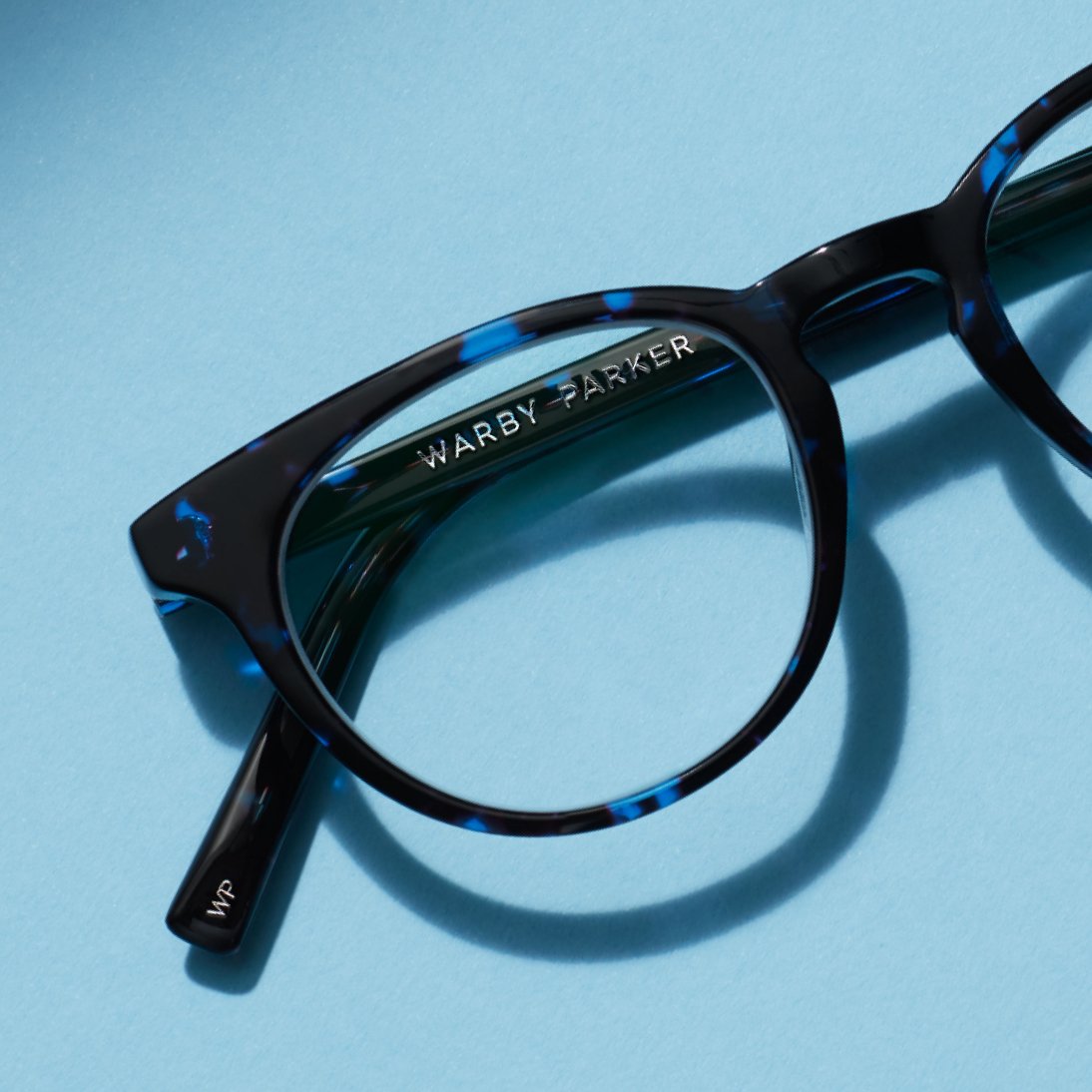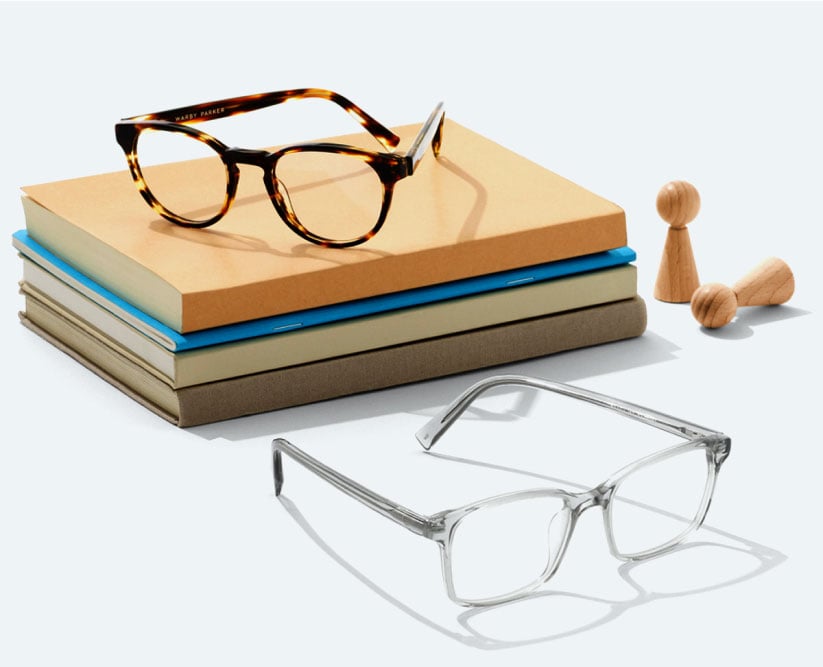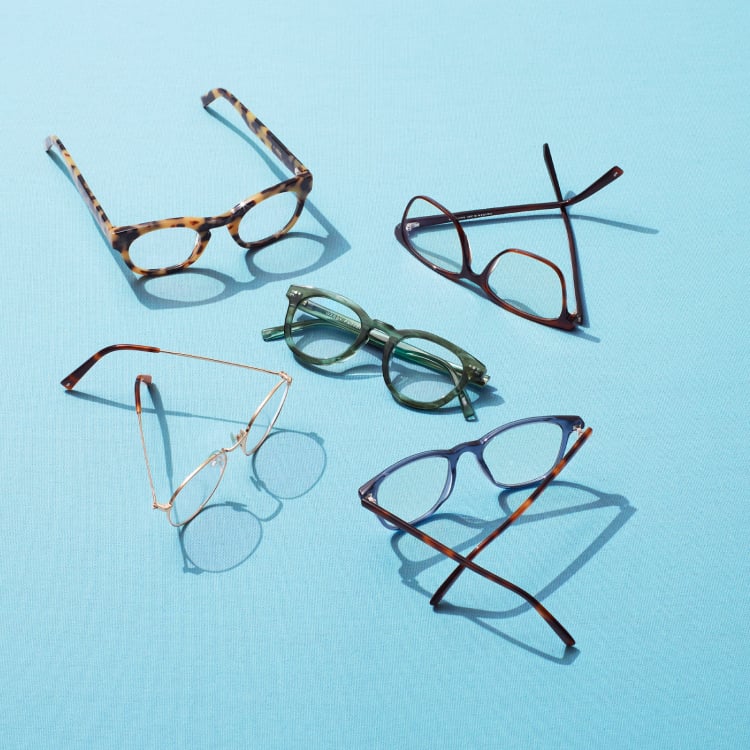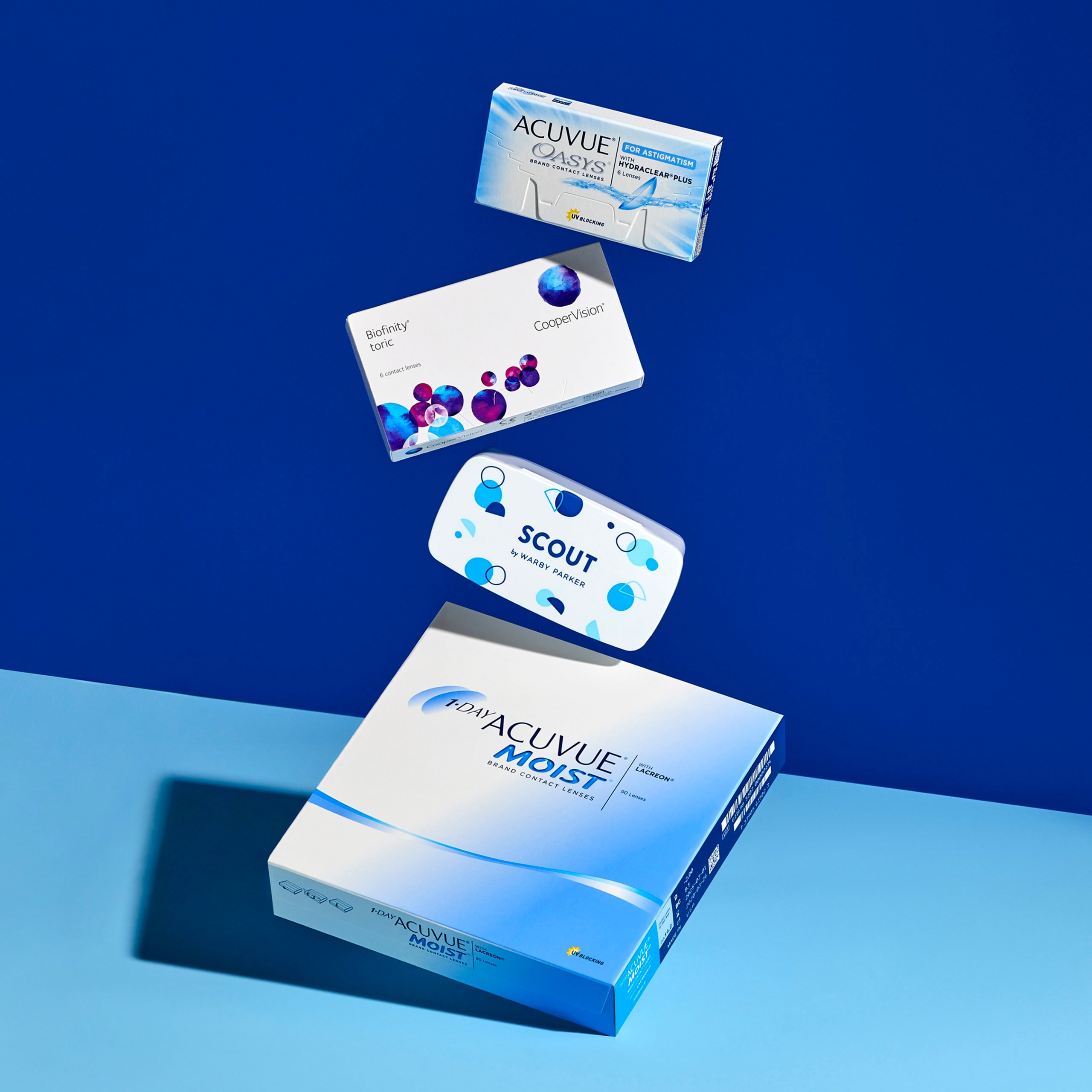Polycarbonate lenses are a type of eyeglass lens made of a strong yet lightweight plastic. They’re designed to withstand impact, correct vision issues, and give your glasses a streamlined appearance with their thin profiles. In fact, we’re such big fans that polycarbonate lenses come standard in all Warby Parker frames.
Since entering the glasses scene in the 1980s, polycarbonate lenses have become one of the most popular lens choices. But why is this type of plastic so prolific? What does it have that glass and other lens materials don’t?
Read on to learn about the benefits of polycarbonate lenses and why you should consider them to complete your frames.
How Are Polycarbonate Lenses Used?
Because they’re both transparent and sturdy, polycarbonate lenses can be utilized in both standard prescription glasses and safety glasses or goggles. They’re also the lens of choice for highly active people and kids: They’re often found in children’s glasses and sports eyewear.
Polycarbonate isn’t just found in eyeglass lenses, however. The material has historically been used for headlights, CDs, helmets (including ones worn by astronauts), and other industrial needs.
Polycarbonate Lenses Advantages and Disadvantages
Wondering if polycarbonate lenses are right for you? Check out their many strengths and other factors below.
Advantages of Polycarbonate Lenses
Impact Resistance
Polycarbonate lenses have consistently proven to be one of the most impact-resistant lenses on the market. They’re not likely to crack, chip, or shatter if they’re dropped or hit with something.
Thin, Lightweight, Comfortable Design
Polycarbonate lenses combine excellent vision correction with a thin profile—up to 30% thinner than standard plastic or glass lenses.
Unlike some thicker lenses, polycarbonate lenses can accommodate strong prescriptions without adding too much bulk. Their lightness also helps them rest easily and comfortably on your face.
Versatility
You can add a variety of different coatings and treatments to polycarbonate lenses, including anti-reflective coatings and blue-light-filtering coatings. Polycarbonate lenses can also be progressive lenses, which feature multiple zones of vision correction.
UV Protection
Polycarbonate lenses are ready to shield your eyes from UVA and UVB rays straight out of the gate: They have built-in UV protection, no additional treatments needed.
Disadvantages of Polycarbonate Lenses
Cost
Polycarbonate lenses tend to cost a little more than regular plastic lenses. That being said, their longevity can make the slight uptick in price well worth it. Other lenses run a greater risk of breaking and needing to be replaced. (Worth noting: At Warby Parker, polycarbonate lenses come standard with your frames at no additional cost.)
Not Suitable for Every Prescription
When it comes to prescriptions with very high powers, polycarbonate lenses have their limits. People with especially strong prescriptions or severe astigmatism may experience some visual distortions when looking through polycarbonate lenses.
If your prescription is stronger than +/-4.0, then high-index lenses may be for you—we carry 1.67 and 1.74 high-index options.
Your optometrist or optician should be able to determine what kind of lens is best for your prescription, and we always recommend following their advice.
Needs Scratch-Resistant Coating
Polycarbonate lenses can get marked up if they haven’t been given a scratch-resistant coating. Fortunately, this kind of coating is automatically applied to all of our polycarbonate lenses.

